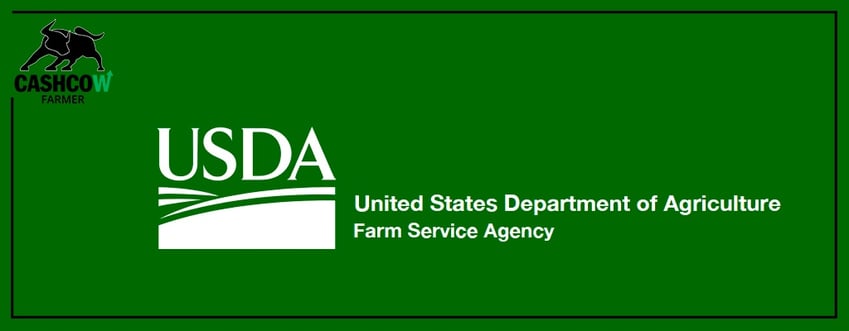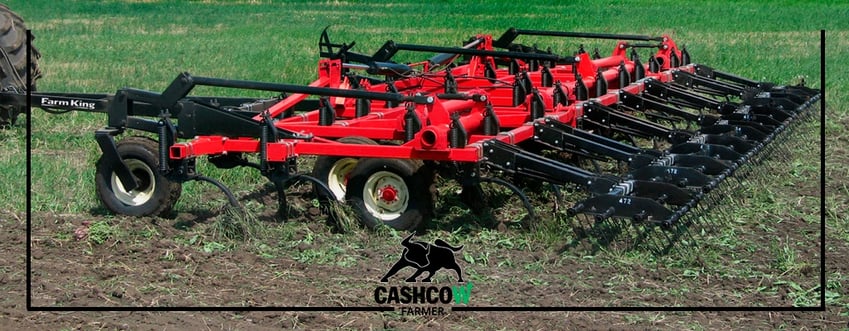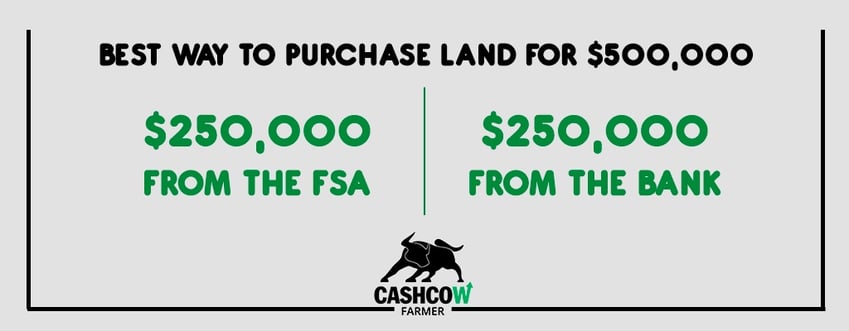Don't have time to read, listen to this article on itunes or click play above.
During a recent antique tractor show in my hometown, I got an earful of complaints.
A number of farmers told me they were still sitting on last year’s crop and didn’t know what in the world to do with it. They were selling last year’s crop to slowly pay for this year's crop.I asked a simple question: Why didn’t they try a commodity loan?
When I was met with blank faces, I realized that a lot of farmers are missing out on one of the best resources available to them: government loans.
Farm Service Agency (FSA) loans are insanely cheap; taking one out is almost like borrowing directly from the federal reserve. They’re great ways to finance purchases and bridge your gaps between selling commodities. If you need to boost your cash position look into FSA loans, starting with these three.
1) Commodity Loans
Commodity loans are exactly what they sound like: money borrowed against your commodities.
The process for taking out a commodity loan is straightforward;
Step 1 is to go to your local FSA agency and state your interest in a loan. Of course there’s always paperwork to be filled out when you borrow money, but the FSA doesn’t require anything difficult to track down. They usually want to know your cash position and current assets, so you should always be updating your personal balance sheet.
Your personal balance sheet includes what you have in short-term assets (cash, stocks), long-term assets (land, machinery), and any liabilities (land payment, other debts). The FSA will review that information to ensure there’s enough collateral to secure the loan.

Step two is to report the crop you have in storage; the FSA will base the amount of your loan on that quantity.
For example, let’s say you have 100,000 bushels of corn. It varies by county, but I got a 1.25% interest rate last year so we’ll go with that number. The FSA gives you $1.83 per bushel of corn. That’s way below the market value, but they want to make sure they’ll get their money back.
Multiply $1.83 times 100,000 bushels and you now have $183,000. You can use that money to cover expenses and the rest to pay down your operating line of credit.
If you use a bank, your rate will probably be somewhere between 4-5.5%. If the commodity loan is around 1.25%, you’re saving about 3.5% just by taking advantage of an FSA loan.
2) Equipment Loans
An equipment loan is simply a loan to buy machinery. The simplest route for the loan is through a bank, but I recommend also looking into an FSA loan. The FSA usually does fixed loans; I did one and got a 2.25% rate.

Although FSA interest rates are usually much lower, equipment loans do have their limits. They max out at $300,000, which doesn’t go very far these days.
The FSA can even guarantee a bank loan for a fee, stepping in to pay it back if you don’t. This is an important farmer subsidy program, because in farming one or two bad decisions could lead to you losing your whole farm. One year you might see record profits, but it doesn’t guarantee that you’ll even be “in the black” the next year. Farming is one of the riskiest businesses in the world.
The process is the same as a commodity loan. Actually, any FSA loan requires the same kinds of paperwork:
1) Tax information from the past couple of years. (Most accountants have this on file; you can just attach it to an email and send it to the FSA.)
2) Your personal, or your farm’s, balance sheet
3) Projections (Cash Cow Farmer really helps with these. You know exactly what you’ll make or lose on every field, the cost per acre on seed, fertilizer, how many bushels each field will grow, etc. I just take a snapshot of my “Fields” page on Cash Cow Farmer and send that as my projection documentation.)
3) Land Purchase Loans
I’m in the process of applying for one of these right now. The limits, again, are kind of archaic. $300,000 is not going to get you much land with current prices, but the FSA rates are incredible.
You have two options:
-
Purchase the land for $300,000, a 40-year loan at 3.75% interest—a really good rate. Your bank’s interest rate would probably be closer to 4.5% on a 20-year ARM, adjusting every 5 years.
-
Take advantage of a part-FSA, part-lending institution loan.

The second is the best option. Let’s say you need to borrow $500,000. Since the FSA’s max is $300,000, you can do $250,000 through them and $250,000 through a private lender.
Since FSA rates can be as low as 2.5%, spread out over 40 years instead of 20, you’ll basically pay your bank twice what you pay the FSA during that time. Much improved payments make up for the inconvenience of working with two institutions.
Interest rates are probably the most important factor when farmers are considering loans. The next most important is fixed vs. variable rates. Also, don't forget about cash flow, you want to be able to make the payment every year.
Banks don’t like to fix long-term loans, because they might have to borrow money themselves if interest rates go back up like they did in the ‘80s. At one point, there was a 17-20% rate for an operating line of credit—can you imagine that?
Still, you can probably get a fixed loan at a higher rate. Your banker will run numbers for you and lay out your options should you go that route.
Conclusion
Anytime you’re going to spend a significant amount of money—and “significant” is different for everyone—go to your FSA office. You can save yourself a chunk of change by looking at what kind of loans and guarantees they have.
Take advantage of these government programs in case something goes awry and they’re not available anymore. A dollar saved is a dollar earned. The frugal farmer always comes out on top.
“CSP” and “Equip” are two other government programs that can help you. To read more about them, and other ways to make any field profitable, read this.




